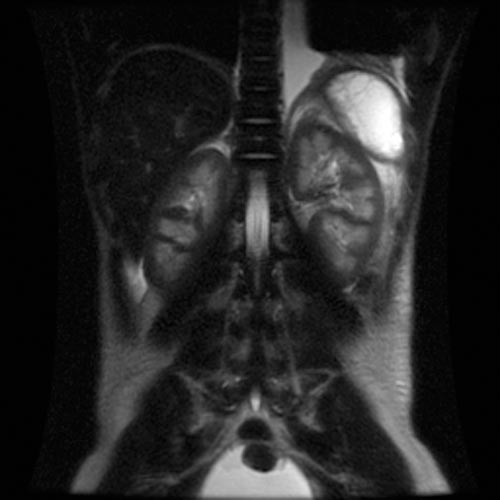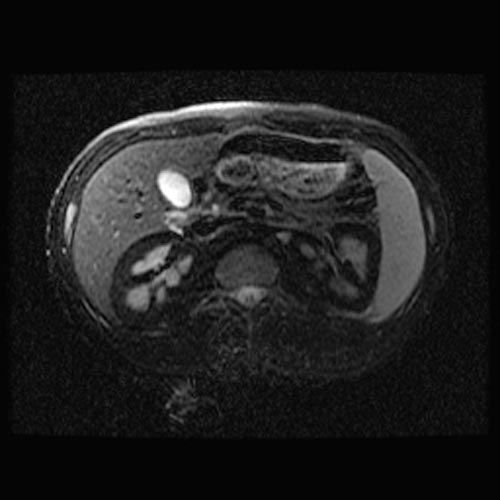Paroxysmal nocturnal hemoglobinuria MRI
|
Paroxysmal nocturnal hemoglobinuria Microchapters |
|
Differentiating Paroxysmal nocturnal hemoglobinuria from other Diseases |
|---|
|
Diagnosis |
|
Treatment |
|
Case Studies |
|
Paroxysmal nocturnal hemoglobinuria MRI On the Web |
|
American Roentgen Ray Society Images of Paroxysmal nocturnal hemoglobinuria MRI |
|
Directions to Hospitals Treating Paroxysmal nocturnal hemoglobinuria |
|
Risk calculators and risk factors for Paroxysmal nocturnal hemoglobinuria MRI |
Editor-In-Chief: C. Michael Gibson, M.S., M.D. [1] Shyam Patel [2]; Associate Editor(s)-in-Chief:
Overview
MRI may be helpful in diagnosing venous thrombosis which is often associated with PNH. MRI is also useful for assessing for splenomegaly.
MRI
There are no MRI findings associated with [PNH]. However, a MRI may be helpful in the diagnosis of complications of [PNH], which include:
- Renal cortical signal intensity loss secondary to hemosiderin accumulation in the renal cortex due to hemoglobinemia and haemoglobinuria.
- Hepatic and splenic signal intensity loss secondary to transfusional siderosis due to repeated blood transfusions.
- Intracranial thrombosis
- Splenic vein thrombosis
- Portal vein thrombosis
- Splenomegaly, which can be quantitated by MRI[1]
References
- ↑ Xie CL, Zhang M, Chen Y, Hu R, Tang MY, Chen TW; et al. (2018). "Spleen and splenic vascular involvement in acute pancreatitis: an MRI study". Quant Imaging Med Surg. 8 (3): 291–300. doi:10.21037/qims.2018.03.04. PMC 5941205. PMID 29774182.







